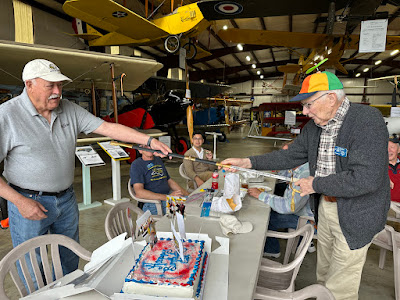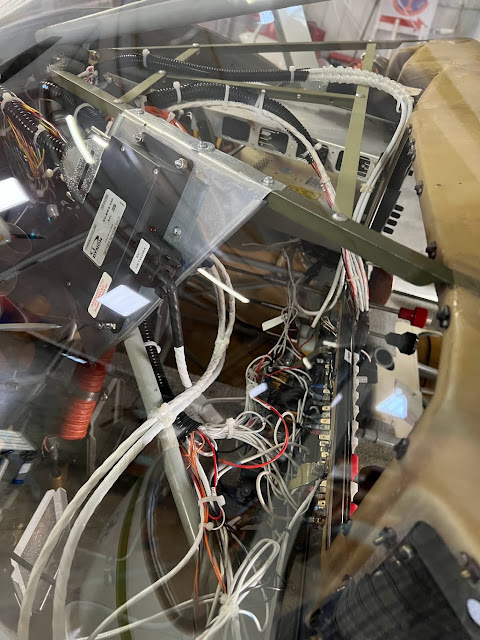It's the end of 2024 and what a year it has been.
The flying was sort of spotty - not much going on for me - but I did manage to enjoy some local flights and a few breakfasts at Morristown TN, Triple Tree events and so on. No real travel involved.
Our resident Senior Partner, Sid, turned 92 in May while he wasn't looking and we celebrated with a cake at the monthly EAA chapter meeting. Sid retired as a Navy doctor and built an airplane that he flew across the North Atlantic before such things as GPS came into use. Captain Sid cut his cake with my Navy officer's sword, the first time it has been out of its scabbard in 50 years or more. What a sport.
We started June with a flight to Morristown for breakfast with a couple hundred of our like minded friends. The EAA chapter there puts on a feed on the first Saturday of every month, year round.
The EAA chapter renovated the airfield rest room to bring it up to snuff for the convenience of all. That began in July and ran over into August.
September started out a beautiful month of flying weather. The EAA pilots flew a dozen or more Young Eagles and the Glastar performed beautifully, as always, to give 4 of those rides. The last flight was for a young man who is older than Young Eagle cutoff age but he's motivated and may have a great future as a pilot or mechanic - he's interested in both.
Then things changed. A hurricane followed the west coast of Florida and ran along a straight line all the way to Western North Carolina. The wind did damage enough; the rain came in torrents and resulted in devastation along both the slopes and low lying areas of the mountains.
In terms of airplanes, the destruction at the airfield was pretty much total. My Glastar and my hangar partner's RV-8 were under 5'10" of water, measured at the high water mark. All the accumulated stuff in the hangar that could float, floated and ended up in a pile when the water receded.
Every airplane on the airfield was flooded. Insurance covered some, others weren't covered. Some owners elected to take the insurance money, some sold for salvage, some are trying to restore their machines. It was a tough decision but I decided the restoration was more than I could handle.The good news is a fellow I know who was interested in the airplane bought it out of salvage and will put it into flying order.
When you see sights like this its very hard. This Bonanza was just delivered to its owner and was not yet insured. It was sent off for a complete rebuild.
All of these airplanes were total losses.































